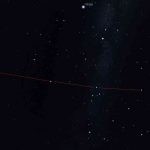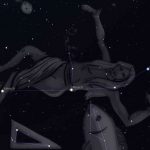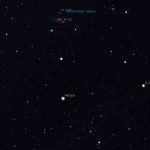| Meaning: | The Princess of Ethiopia, the Chained Woman | Print out the star map from Free Star Charts
Things to look for: Messier objects: Note: [x.x] indicates visual magnitude |
|
| Pronunciation: | an draw’ meh duh | ||
| Associated Asterisms: | The Large Dipper, the Great Square | ||
| % of the sky: | 1.75% | ||
| Visible Stars: | 54 stars brighter than magnitude 5.5 |

Andromeda contributes one star to the asterism of the Great Square, α Andromedae. It is a familiar autumnal constellation that contains one of the most observed objects in the northern hemisphere skies, M31. The lower branch of the constellation points to Taurus and the other Winter constellations. Until 1928 it shared δ Pegasi as α Andromedae but the IAU gave it sole custody.
To find the constellation, traverse from Ursa Major (specifically Phecda), through Polaris, the North Star, to Caph in Cassiopeia (rightmost star in W) and then the same distance again (Polaris to Caph) to arrive at Alpharatz, α And. These are the same instructions as for Pegasus of course.


The constellation is often named the Chained Woman or the Princess on Ethiopia. The mythology draws a maiden sideways with her head towards Pegasus, her waistband at β Peg and her foot at γ Peg.
Andromeda is famed for its bright galaxy M31. It sits on the end of her waistband. Simply go up from β And. Mirach to the mid star in the band and go the same distance again. There are three galaxies here M31, M32 and M110 with the largest being M31.
Almach (γ And) is the second best coloured multiple star after Albireo and definitely worth a look to see the orange and blue colours.
The Andromedids meteor shower runs from 26th Sept to 6th Dec. The peak is on the 9th Nov and in good conditions you can expect a zenithal hourly rate of 3. The radiant is equidistant between β and γ And and just below.

